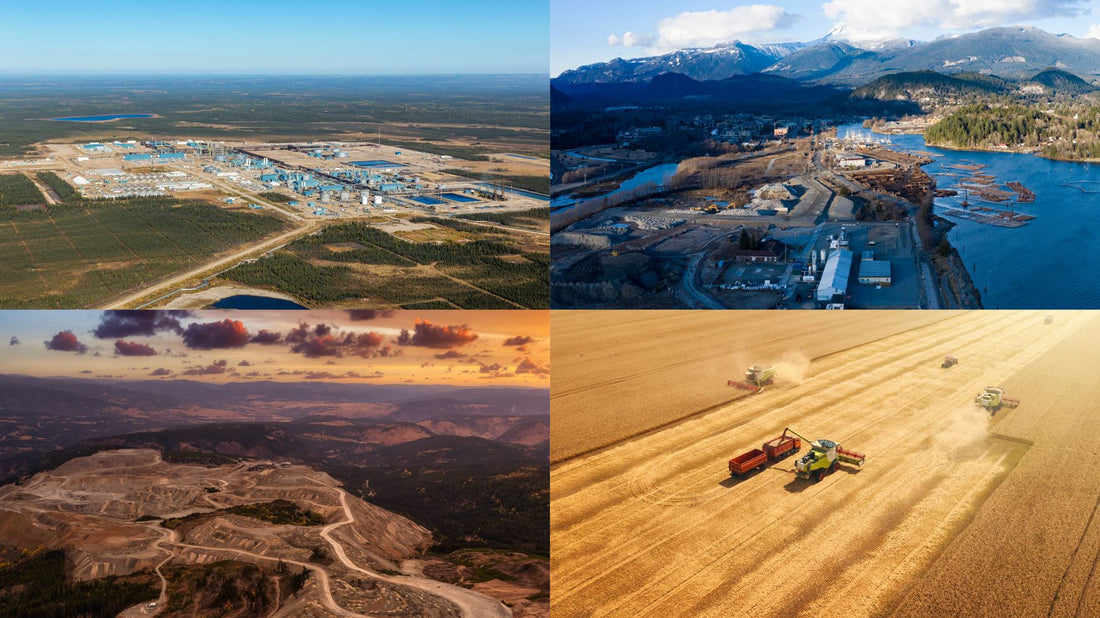
Why Tungsten is the Preferred Material for Critical Canadian Industries
Canada is home to some of the world’s most demanding industries, from mining to aerospace to energy production. The industries require material that withstands difficult conditions, be it cold climates or high-pressure environments below the ground. Tungsten has come out as one of the preferred materials by industries in Canada. It is known for exceptional hardness, durability, and resistance to wear, making it suitable for all types of work. Slowly but steadily, it has gained popularity and has gradually become the go-to choice in most critical industries in Canada.
What’s so special about tungsten’s role in Canada, and why is it gaining such ground? Let’s dig into the remarkable properties of tungsten in critical industries and explore why it’s such a game-changer within Canada.
The Science Behind Tungsten: Why It Stands Out
Before we look at the use of tungsten, it is interesting to first determine what gives this metal its uniqueness. Tungsten has the highest melting point of all metals – an astonishing 3,422°C (6,192°F). This means it can be held at structure and integrity even in extreme heat without losing its properties. This creates an excellent environment in which most materials would melt, crack, or lose their properties.
One of the benefits of tungsten is that it is also very dense. It is heavier than steel and much harder than most others used in industries. Its hardness and toughness make it immensely resistant to wear, all of which is important given the high friction associated with drilling, cutting, and machining.
Another significant benefit of tungsten is that its coefficient of expansion is low. By low, this means it will not expand easily when heated, and its dimensional stability at high temperatures is not lost. From deep underground to the highness in the air, it needs to hold its shape even while under stress for its reliability.
Why Tungsten is Priceless in Canadian Mining
Canada is a vast mining nation. In this business, making enormous holes in the ground can quite literally, and sometimes metaphorically, mean digging extremely deep in search of valuable minerals. From potash to copper to gold, mining companies need equipment that could take all the abuse in pretty nasty conditions. And along comes tungsten.
Tungsten’s hardness makes it the ideal choice for use in mining tools. This includes drill bits, hammers, swaging rods, and cutting heads. The metal provides maximum resistance to wear. The tools made from tungsten fragments will remain sharper and, in practice, much more durable than their steel counterparts. This accounts for the reduced downtime resulting from tool replacements. This is particularly essential for miles underground or in remote locations where the necessity to keep costs at the lowest affordable level to maintain equipment is absurdly high.
Another application of the tungsten alloy cube is in mining operations. It is deployed where there is high heat and pressure. Since mining is a business dependent upon large machinery running under stressful conditions, a tungsten penetrator can hold out in such environments, making it vital to the process. Products and equipment from this material not only increase productivity but also cut costs in an industry where efficiency is the only way to profit.
Want to know more about tungsten’s role in Canada or challenges facing tungsten industry? Contact us at Agescan International.
Aerospace Industry: Why Tungsten is Taking Off

One of the biggest aerospace sectors worldwide is in Canada, and aircraft demand intense mechanical stress that withstands both high and low temperatures. Its high strength, resistance to heat, and low expansion properties make it suitable for aerospace applications.
Tungsten alloys are now an integral part of the counterweights and balance systems and even the high-performance parts of the engine. Sure enough, its density properties guarantee weight distribution and stability within an aircraft, which is particularly vital for safety and efficient flying operations. In the aerospace industry, where every ounce weighs and extreme conditions prevail, the merit of tungsten is that it can perform while not losing its integrity, which is a huge advantage.
Tungsten in the Energy Sector: Powering the Future
Tungsten is used to create holes in some of the toughest materials. It is used in drilling equipment and for building pipelines and refineries because of its ability to resist wear and corrosion. This is particularly useful for the oil and gas operations in Canada due to the difficult climate.
This property of resistance to radiation and heat gives tungsten the property for reactor parts, which would otherwise be pivotal in ensuring safety and efficiency in nuclear reactors. High levels of stress in these materials make this material crucial in the nuclear sector, which overcomes the challenges facing tungsten industry. As it is also key in nuclear energy, tungsten plays a significant role in that sector.
A Sustainable Future: Tungsten’s Role in Green Technologies
Although traditionally utilized in heavy industry, at present, the growing spotlight of “green technology,” sustainability, and efficiency in energy usage has many of its advocates on the green bandwagon: tungsten is long-wearing and resistant to wear. The longer life of a tool or part made from tungsten also means that end-users will not need to replace it as often, and therefore, there is a lower carbon footprint as a whole.
However, in reality, tungsten is 100% recyclable. Once tools or components have reached the end of their lifecycle, they can be repurposed or recycled in a new application. This is a huge benefit for industries interested in waste reduction and circular economies.
Conclusion: Why Tungsten is Canada’s Material of Choice
Its incredible hardness, high melting point, and durability render tungsten indispensable for several Canadian industries, such as mining, aerospace, and energy. This material can perform in extreme conditions where other materials fail, which is why it’s gaining so much momentum. Critical industries do not compromise on reliability, efficiency, and performance. That’s where tungsten stands supreme as a material of the future.
Tungsten’s role in Canada alone will only increase with the current evolution of industries to increase focus on sustainability and innovation. In fact, this establishes its place as an integral part of the industrial growth of Canada.




